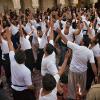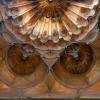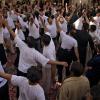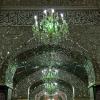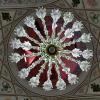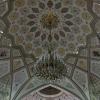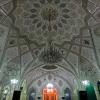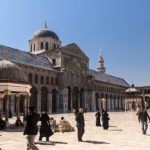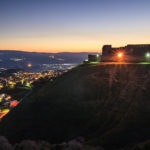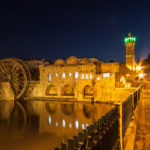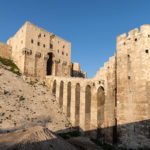Faith moves Mountains
Faith, believe and religion are most perceptible in Damascus. Western Europeans will surely immediately spot all the covered women, who are sometimes even completely shrouded in their burqas. In Damas you can meet the coexistence of about 30 different religions. Its adherents are peacefully living together. I already gave an example of how respectful people are: when taking photos inside Umayyad Mosque I stood between praying people and southern wall, unaware of that being a little gaffe.
Another positive experience was my visit to Sayeda Roqqaya Mosque. At the same time of my Damascus stay the anniversary of the death of Sayeda Roqqaya bint Al-Hussein had been commemorated. Shiites from all over the muslim world, from Pakistan, Iran, Yemen to even London (UK) made a pilgrimage to that small Damascene Old Town mosque north of Umayyad Mosque to mourn. The area around the mosque was heavily crowded with people, which attracted my attention.
Being curious about what’s going on inside the mosque I dropped my shoes before going inside. My presence immediately attracted attention and a man came up to me. Politely he asked me to open my backpack and if he could check it. In the face of daily Iraqi horror news about fellow Muslims attacking each other, that polite security check-up was appropriate and also in my interest.
Once the ice was broken, people explained to me the background the obsequies and why they are mourning after Sayeda Roqqaya. She is the daughter of Imam Al-Hussain, Chief of the Martyrs, who is a direct descendant of Prophet Mohammed. That makes her being a follow of Mohammed as well.
While listening to their explanations, a lot of men changed clothes and put on a white t-shirt. I saw their upper bodies being littered with scars resulting from self-flagellation. The men began to sing a song while heavily pounding their flat hands on their chest. That rhythm was even audible from some hundred metres away. Being confined to that meanwhile clearly noticeable religious atmosphere, I decided to visit that little mosque again on Friday, the day of the great prayer. The spectacle happened again, but with even more people attending. Some men cut their forehead with a razor blade and began to bleed. Other men started to whip or even flagellate their back, while inside the mosque a crowd of women was heavily crying, sitting and gazing towards the room that houses the shrine.
Those moments were quite intimate; it’s not allowed to take any photo. I noticed that intimacy myself and switched off the camera; that’s been an act the imam appreciated. After the prayer he came up and allowed me to take photos of the mosque’s interior architecture. The Sayeda Roqqaya Mosque has a breathtakingly filigree interior decoration, but some is just a raw shoddy. While the prayer hall’s ornamentation consists of many lovely painted details and mirror masked outlines, the room housing the shrine is strewn with thousand of small colour sequins; a permanent sensory overload. After the prayer small boys came up to give me sweets. They were happy that I was a part of that moment, someone told me.
In that part of the world religion also means to be a life perspective as the Middle East region is more or less stable only for a short time. Orient was often enough the apple of discord of western colonial powers. Doesn’t matter of Alexander the Great, the Ottomans or a US-American/British aggression, all tried to exploit or control that interface between Far East and Europe.
After experiencing religion that way to me religion firstly stands for how to approach people, stands for the values of everyday life and how to consort with people. I entered a Lord’s house without being a believer from a Muslim point of view. Religion integrated me and let me learn, even if I was an obvious outsider.
Used photo equipment: Canon EOS 20D, Canon EF-S 10-22, Tamron 17-50 f2.8, Tamron 28-75 f2.8
